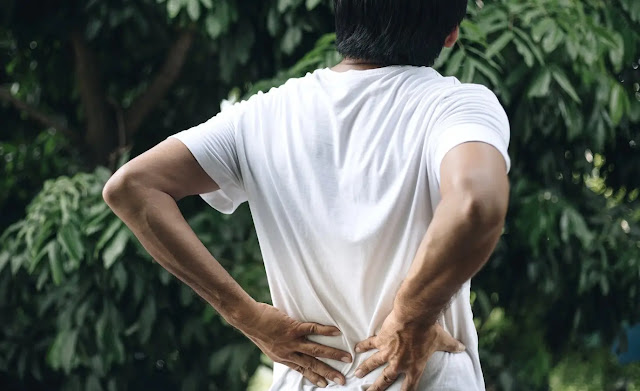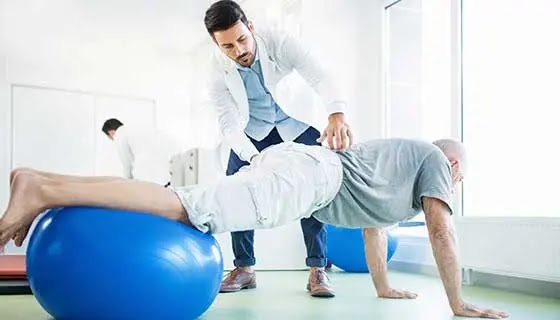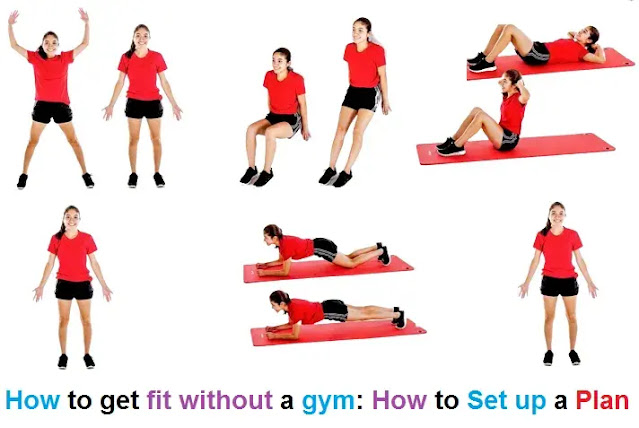
Finding a real home for back pain is a dream for millions of patients around the world. There is a good chance that you will be one of those lost souls who have suffered so much pain without any success in ridding yourself of tormented back pain. I fully understand what you are going through, because I have suffered horrific lower back pain all my life and now have a variety of other spinal concerns, including neck pain. In my experience, finding an elusive cure for chronic pain is very similar to imagining winning the lottery. Sure, someone is doing it, but the majority can only imagine how great it should be ...
1. Back pain Causes:

Back pain often develops without a reason that your doctor can identify through a test or imaging study. Cases commonly associated with back pain include:
Frequent lifting or sudden movement can strain your back muscles and spinal ligaments. If you are in poor physical condition, constant pressure on your back may lead to painful muscle contractions
Bulging or tearing discs:
Discs act as cushions between bones (vertebrae) in your spine. Soft matter can swell inside the disc or rupture and press the nerve. However, you can have a bulge or tear in your disc without feeling back pain. Disc disease is often detected accidentally when you have an X-ray of your spine for another reason.
Arthritis:
Osteoarthritis can affect the lower back. In some cases, arthritis in the spine can narrow the area around the spinal cord, a condition called spinal stenosis.
Osteoporosis:
Spine vertebrae can develop painful fractures if your bones become porous and fragile.
2. Back Pain Symptoms:

There are many ways that back pain symptoms can manifest for adults. Often, this condition begins in one of two ways; sudden and sharp or slow and dull. The treatments for either type of onset of back pain symptoms is often the same in order to help patients recover as quickly as possible.
Back pain symptoms that occur suddenly are often referred to as acute conditions. These often occur after an injury or sprain. Acute back pain symptoms are often sudden and severe, ranging from sharp pain in a localized area to spreading numbness. There may be a pain when standing, bending or stooping as part of the back pain symptoms. These back pain symptoms may last up to six to eight week but treatments may reduce this recovery period.
Chronic back pain symptoms:
Chronic back pain symptoms often last longer than eight weeks, and may last months to years. Chronic conditions may or may not have a source, and can be difficult to recover from. Chronic back pain symptoms often emerge from a more serious injury, or as the result of another health condition. This type of pain is often dull, and may spread across the back, legs or arms when it is inflamed. This condition may be aggravated by changes in temperature, movement, or excessive exercise or lifting.
Both conditions often have similar back pain symptoms that can limit movement and cause pain for many. There may feel as if there is pressure on a part of the back or spine, or a spreading radius of pain may be felt. Muscle spasms or feelings of weakness may occur near the injury site, or spread throughout the back. In more serious conditions, these back pain symptoms may spread down one or both of the legs, and is often noticed in chronic cases.
Persisting back pain symptoms:
If back pain symptoms become more severe, especially if accompanied by a fever, a doctor should be consulted. In some cases, other health conditions may lead to pain in the upper or lower back and require treatment. This is often the case with infection in the kidneys or urinary tract. Incontinence that accompanies back pain symptoms should be reported to a physician immediately.
3. Back pain relief:

Ranging from simple strains to degenerative disks, back pain may be chronic – lasting longer than 3 months – or acute. The spine supports the fragile nervous system that controls the body’s sensations and movements and is divided into 4 sections. The lower, or lumbar, region is made up of 5 disks, commonly known as L1 – L5. This is the most common site of back pain. The upper, or cervical, disks, present the second highest risk. When it comes to back pain relief, both areas are frequent causes of concern.
Remedies for back pain relief are almost as numerous as causes, and their effectiveness varies depending on the origin of the pain and the individual being treated. While all back pain should be evaluated by a medical doctor, there are also many relatively simple treatments that can help with back pain relief.
Kinds of Back Pain Relief:
• Analgesics and anti-inflammatory medications, such as NSAIDS
• Prescription medications, such as muscle relaxers and pain relievers
• Topical creams and lotions, such as Capsaicin or Menthol
• Supplements, such as B12, magnesium, or Vitamin D
• Alternative medications, such as willow bark
• Hot and cold compresses
• Acupuncture
• Spinal manipulation
• Biofeedback
• Ultrasound
• Transcutaneous electrical nerve stimulation (TENS)
• Massage
• Bodywork, such as Rolfing, or energy medicine
• Sleeping with a pillow between the knees
• Exercises that build core strength
• Swimming or walking
• Gentle stretching or yoga
• Breathing techniques
• Anti-inflammatory diet
When methods such as these fail to provide back pain relief, medical procedures may be required. Invasive treatment, however, has no guarantee of success and is used only in patients with nerve damage or neurological impairment. Procedures for back pain relief range from those that can be completed in the doctor’s office to those requiring hospitalization.
Steps for Prevention: The Best Back Pain Relief
• Proper nutrition and diet
• Comfortable shoes
• Good posture
• Stretching before exercise or exertion
• Ergonomic chair and office equipment
• Firm mattress
• Careful lifting and bending
Although most people suffer from this complaint at some point in their lives, many chronic problems can be alleviated or prevented with proper care and knowledge of the steps that lead to back pain relief.
4. Back Pain Treatment:

Back pain is one of the most common reasons for doctors’ visits, and the ailment costs billions in lost wages and back pain treatment annually. Not only does this result in lost wages, but often expensive tests are needed to diagnose the proper back pain treatment.
Ranging from mild to debilitating, back pain can have a wide range of causes, such as simple strains, arthritic disks, injuries to the spine, or emotional distress. Back pain treatments are as varied as its causes, and there is no single solution.
Back Pain Treatment:
• Acetaminophen and NSAIDs are over-the-counter drugs frequently used for back pain treatment, but all of these have side effects. Prescriptions drugs may also be required.
• Good posture and knowledge of how the back works help to prevent back pain or to keep it from worsening. Knowing how to bend or lift properly can be an important part of back pain treatment.
• Alternative back pain treatment may include acupuncture, chiropractic care or spinal manipulations, massage, physical therapy, biofeedback, meditation, or counseling.
• Appropriate exercise –such as yoga, walking, swimming, or stretching – is often beneficial.
• Surgical treatments or other medical interventions are usually the last resort and are only effective if there is damage to spine or nervous system. When needed, medical professionals usually prescribe the least evasive procedures effective for the diagnosis.
• Spine centers often provide a wide variety of back treatment modalities and may be helpful in finding the most beneficial combination of treatments, as well.
• In addition to exercise and physical therapy, equipment designed to augment back care is available over-the-counter and by prescription. Although these devices can be a helpful tool in back pain treatment, it’s important to check with a medical specialist before using them. When used improperly or with the wrong diagnosis, further damage could be done to the back. Among these are inversion tables, tools that align the disks and stretch the back, devices that lubricate the spine and belts that provide support.
Back Pain Treatment Conclusion:
Regardless of the cause of back pain, one thing is certain. There’s no perfect back pain treatment that will work for everyone and everything. There’s no “one-size-fits-all” solution. In fact, successful back pain treatment usually involves a combination of several different approaches.




.webp)



.webp)


Social Plugin